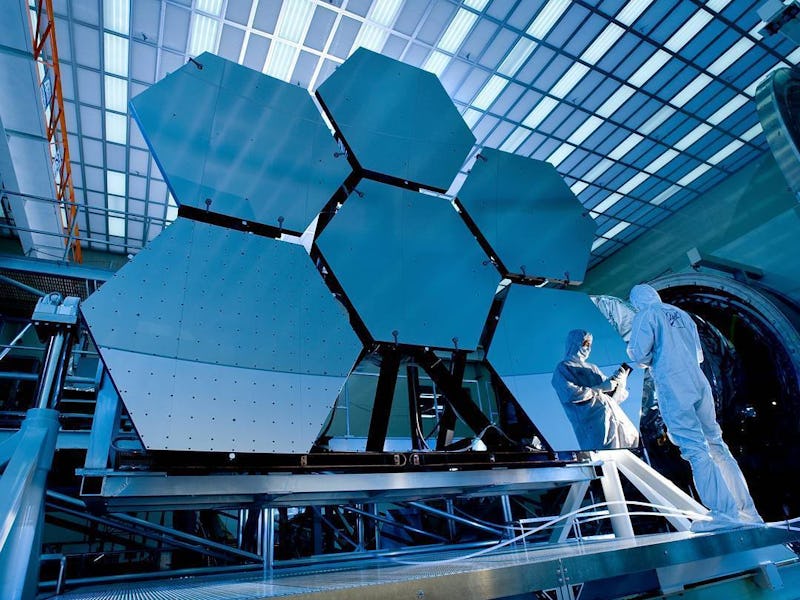NASA Crews Install Final Mirror Segment of the James Webb Space Telescope
The 18-segment piece is more than 21 feet in diameter.

The final segment of the primary mirror on what will be the most powerful space telescope ever launched, the James Webb Space Telescope (JWST), has been installed at the Goddard Space Flight Center in Greenbelt, Maryland, NASA reported Thursday.
The mirror, consisting of eighteen hexagonal segments — each roughly 4.2 feet in length and 88 lbs. in weight — will work as one single component, a mirror approximately 21.3 feet in diameter.
NASA’s Science Mission Directorate associate administrator John Grunsfeld was quoted in a NASA press release Thursday:
“Scientists and engineers have been working tirelessly to install these incredible, nearly perfect mirrors that will focus light from previously hidden realms of planetary atmospheres, star forming regions and the very beginnings of the Universe…With the mirrors finally complete, we are one step closer to the audacious observations that will unravel the mysteries of the Universe.”
The installation required a robotic arm called the Primary Mirror Alignment and Integration Fixture to carefully align and affix the segments onto the Webb telescope structure.
Goddard Space Flight Center optical telescope element manager Lee Feinberg stated via NASA’s website that “Completing the assembly of the primary mirror is a very significant milestone and the culmination of over a decade of design, manufacturing, testing and now assembly of the primary mirror system…There is a huge team across the country who contributed to this achievement.”
Further construction remains to be completed — and the components of the James Webb telescope must be tested to ensure the construct can survive a launch — which is currently for October of 2018. Once in orbit, the JWST — the successor to the Hubble Space Telescope — will use its technology to search deeper into space than mankind has ever looked, intending to observe the formation of early galaxies, as well as the birth of new stars and planetary systems.